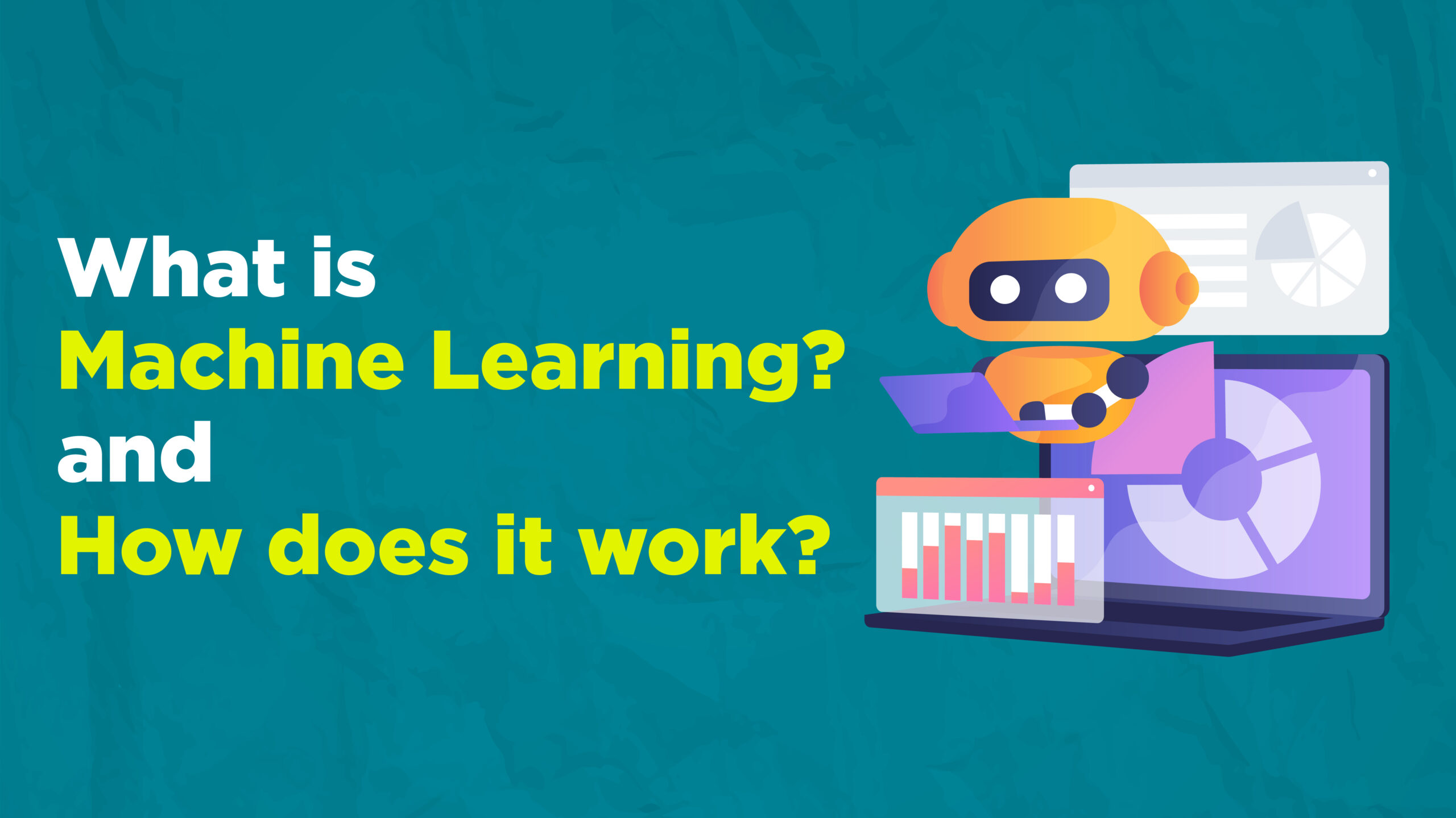Have you ever dreamt of machines that learn and adapt, mimicking the magic of human intelligence? That dream is no longer science fiction! Machine learning (ML) is revolutionizing our world, with a projected market size of $17.02 billion by 2025 (according to Grand View Research, 2023). It’s being used to diagnose diseases with up to 95% accuracy in some cases (e.g., diabetic retinopathy detection), and even power self-driving cars that can navigate complex road conditions. But what exactly is machine learning, and where do you even begin on this exciting journey?
What is Machine Learning?
Machine learning is a branch of artificial intelligence (AI) that allows computers to learn without being explicitly programmed. Imagine you’re flipping through vacation photos, right? You can spot your friends in a heartbeat, even if they’re hiding behind a giant novelty mustache. That’s kind of like how machine learning works! Instead of us telling computers exactly what to do, they can learn from tons of data, like pictures or emails, to figure things out on their own. This lets them do super cool stuff, like recognizing your face in a selfie (mustache or not) or filtering out spam even if the scammers get sneaky with their wording. It’s basically like having a super-powered brain that gets sharper the more information it sees!
Imagine this: you’re crafting a program that can personalize your online shopping experience by recommending products you’ll love (like Amazon recommendations), contribute to groundbreaking medical research by analyzing vast datasets of patient data, or even create art that pushes the boundaries of creativity (think deepfakes or AI-generated music). That’s the potential you hold within your grasp when you embark on a machine learning adventure.
Step 1: The Spark of Curiosity
The first step is the most crucial: A 2020 study by McKinsey Global Institute found that 70% of jobs will require some digital skills by 2030, and machine learning is a highly sought-after skillset. Here’s a secret: the most successful machine-learning minds are those who never stop asking questions. Why is the sky blue? How can a machine understand the nuances of human language? These childlike questions pave the way for groundbreaking discoveries.
Fuel your curiosity by:
- Reading captivating articles and books: Check out Michael Nielsen’s “Neural Networks and Deep Learning” or François Chollet’s “Deep Learning with Python.” These books delve into the fascinating world of neural networks, a core concept in machine learning.
- Watching documentaries and explainer videos: “AlphaGo” chronicles the rise of a machine learning program that defeated the world champion in the complex game of Go, and “Machine Learning | Crash Course Computer Science” offers a great video introduction.
- Engaging in online forums and communities: Platforms like Reddit’s r/MachineLearning and Facebook groups like “Machine Learning Mastery” connect you with fellow enthusiasts and experienced practitioners who can answer your questions and provide valuable insights.
Step 2: Build Your Foundation
Now that your curiosity is burning bright, it’s time to build a solid foundation. Don’t worry, you don’t need a Ph.D. in mathematics to get started. Here are the essential building blocks:
- Basic Programming: Python is a popular and beginner-friendly language for machine learning, with frameworks like TensorFlow and scikit-learn built specifically for this field.
- Mathematical Superpowers: A grasp of linear algebra, statistics, and calculus will empower you to understand the core concepts behind machine learning algorithms.
- Data, Glorious Data: Machine learning thrives on data. The more data you have, the better your models can learn and make accurate predictions. Familiarize yourself with data analysis techniques (e.g., data cleaning, feature engineering) and how to wrangle messy datasets into usable formats.
Step 3: Dive into the Algorithm Arena
Ready to unleash the power of algorithms? Buckle up! Here are the fundamental ML algorithms you’ll encounter:
- Supervised Learning: Imagine a wise teacher guiding you. Supervised learning algorithms learn from labeled data, where each data point has a corresponding label or outcome. For example, you could train a supervised learning algorithm to identify handwritten digits in images (classification) or predict house prices based on historical data (regression).
- Unsupervised Learning: Ever wonder what hidden patterns lurk within data? Unsupervised learning algorithms find these patterns in unlabeled data, where the data points don’t have predefined categories. For instance, you could use unsupervised learning to group customers with similar buying habits together (clustering) or identify anomalies in network traffic that might indicate a cyberattack. Common unsupervised learning algorithms include k-means clustering and principal component analysis (PCA).
- Reinforcement Learning: Think of a master strategist constantly learning and adapting. Reinforcement learning algorithms learn through trial and error, interacting with an environment and receiving rewards for desired actions.
Step 4: Experiment, Explore, and Celebrate the small wins!
The beauty of machine learning lies in its hands-on nature. Don’t be afraid to experiment! There are tons of free datasets available online, perfect for practicing your newfound skills. Here are some resources to kickstart your exploration:
- Kaggle: A vibrant online community where you can find datasets covering a wide range of domains (from healthcare to finance), compete in coding challenges (like predicting customer churn – will a customer stop using a service?), and learn from other data scientists through discussions and forums.
- TensorFlow Playground: An interactive playground that lets you visualize how machine learning algorithms work. You can experiment with different algorithms and see how they learn from data in a fun and engaging way.
- Google Colab: A free Jupyter Notebook environment in the cloud. Jupyter notebooks allow you to combine code, visualizations, and text in a single document, making it a powerful tool for developing and experimenting with machine learning models.
Here’s a step-by-step method to get you started with your first machine-learning project:
- Choose a project idea: Think about what interests you and identify a problem that machine learning could potentially solve. It could be something simple, like building a program to recommend movies based on a user’s past preferences, or something more complex, like analyzing medical images to detect diseases.
- Find a suitable dataset: Once you have a project idea, you’ll need to find a dataset to train your machine learning model. Kaggle and UCI Machine Learning Repositories are great resources for finding datasets across various domains.
- Explore and clean the data: Before you can use the data to train your model, you’ll need to explore it to understand its characteristics and clean any errors or inconsistencies. This might involve removing missing values, handling outliers, and transforming the data into a format suitable for your chosen machine learning algorithm.
- Choose an appropriate algorithm: Based on the type of problem you’re trying to solve (classification, regression, clustering, etc.) and the characteristics of your data, select a suitable machine learning algorithm.
- Train your model: Split your data into training and testing sets. The training set is used to train the algorithm, while the testing set is used to evaluate its performance. Once you’ve chosen your algorithm, you’ll need to train it on the training data. This involves feeding the data into the algorithm and letting it learn the underlying patterns.
- Evaluate your model: After training your model, you need to evaluate its performance on the testing data. This involves using metrics like accuracy, precision, and recall to assess how well the model performs on unseen data.
- Refine and improve: Machine learning is an iterative process. If your model’s performance isn’t satisfactory, you may need to go back and adjust your approach. You could try different algorithms, hyperparameter tuning (adjusting the settings of the algorithm), or feature engineering (creating new features from existing data) to improve the model’s performance.
The Future of Machine Learning
Machine learning is rapidly evolving, constantly pushing the boundaries of what’s possible. Here’s a glimpse into the exciting future that awaits:
- Explainable AI (XAI): As machine learning models become more complex, understanding how they arrive at their decisions becomes crucial. XAI techniques aim to make these models more transparent and interpretable, fostering trust and wider adoption.
- AutoML: Automating the process of selecting and tuning machine learning algorithms can significantly reduce development time and make machine learning more accessible to a wider range of users.
- Edge Computing: Processing data closer to where it’s generated, on devices at the “edge” of the network, allows for faster decision-making and improved efficiency in applications like self-driving cars and Internet of Things (IoT) devices.
Become a Part of the Machine Learning Revolution
so machine learning is pretty cool, right? But it’s also one of those things that keeps changing, like fashion trends for robots. That’s why you gotta keep learning new stuff. Think of it like leveling up in a game – online courses, workshops, conferences, all that good stuff. Remember that time we stayed up late watching talks about deep learning? Yeah, that kind of thing! Also, there are these open-source projects out there, basically like collaborative coding playgrounds. You can team up with other wizards like us to build awesome stuff and share your knowledge. Plus, meeting other machine learning peeps online or at meetups is a blast. You’d be surprised how many cool people are out there tinkering with the same stuff you are! It’s all about bouncing ideas around and learning from each other, you know? So yeah, that’s the gist – keep learning, collaborate, and network. We can rule the machine-learning world together, one project at a time!

